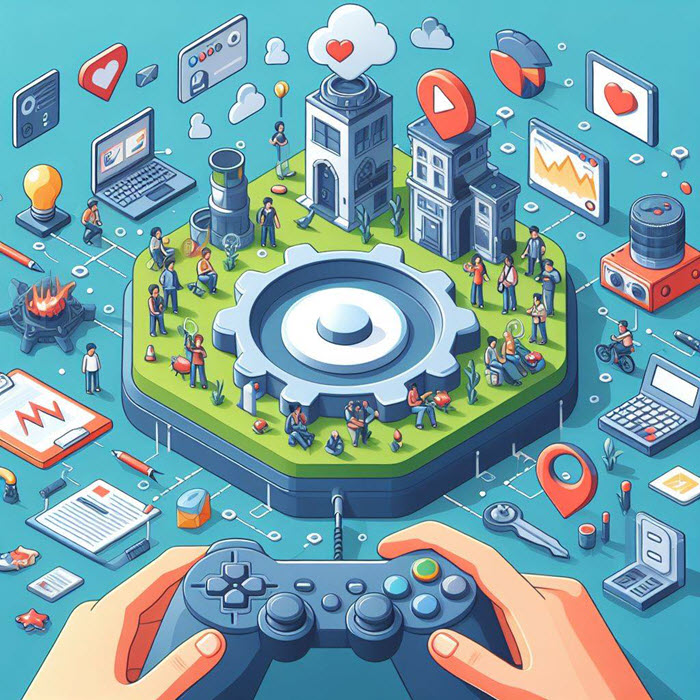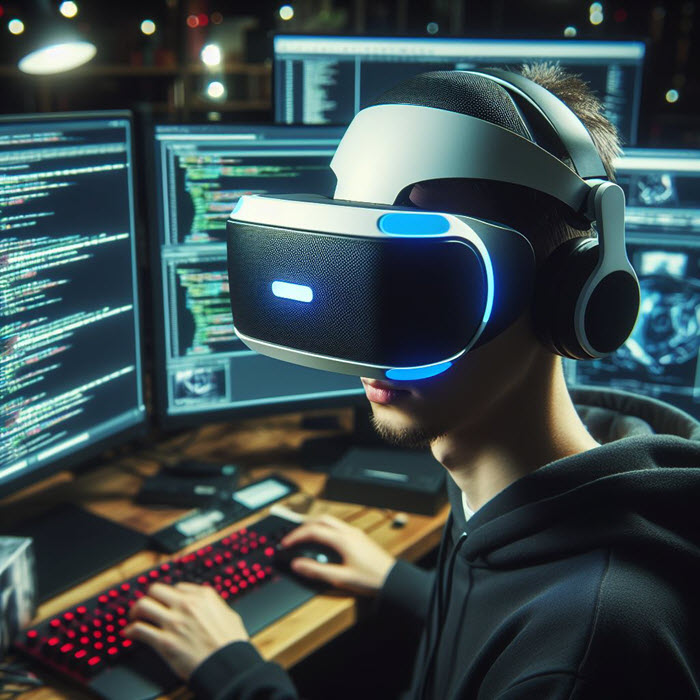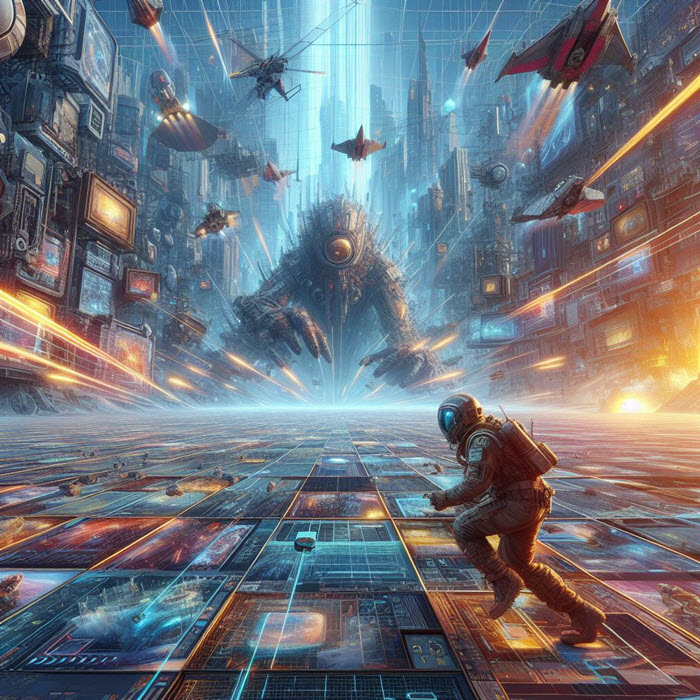With nearly 30,000 passionate attendees gathered over five exhilarating days, the Game Developers Conference (GDC) 2024 proved to be a hub of inspiration, innovation, and collaboration.
This year, over 300 leading game industry companies showcased their cutting-edge creations, while more than 1,000 speakers ignited discussions across 730 sessions, workshops, and roundtable gatherings.
As the curtains draw on this electrifying event, let’s delve into the trends that emerged, promising to shape the future landscape of game development.
AI and Machine Learning
The 2024 Game Developers Conference (GDC) showcased a remarkable convergence of artificial intelligence (AI) and machine learning technologies, revolutionizing the way games are created, experienced, and enjoyed. From groundbreaking innovations to visionary investments, the event illuminated the path towards a new era in gaming.

Let’s delve into the highlights:
- Elvis Liu, AI Team Lead at MoreFun Studios, captivated audiences with insights into the transformative power of large-scale reinforcement learning in fighting games. By leveraging this approach in titles like Naruto Mobile, developers can achieve unprecedented efficiency gains, slashing training time and resources by up to 90%.
- Tencent AI Lab stole the spotlight with the unveiling of its GiiNEX Game AI Engine, a game-changer for developers seeking to push the boundaries of creativity. Featuring generative AI technology, GiiNEX empowers creators to craft immersive 3D city scenes and harnesses the power of decision-making AI for rapid game innovation and testing.
- But perhaps the most tantalizing glimpse into the future came with Ubisoft’s revelation of project NEO NPC. This groundbreaking prototype harnesses generative AI to breathe life into non-playable characters (NPCs), enabling dynamic, real-time interactions that deepen immersion and storytelling. Powered by InWorld AI’s character engine, NEO NPCs herald a new frontier in player engagement, offering a glimpse of the boundless possibilities when AI and gaming converge.
AI and machine learning are not just transforming games—they’re reshaping the very fabric of interactive entertainment
The Rise of User-Generated Content
At the heart of GDC 2024’s narrative was the empowering surge of user-generated content (UGC), catalyzing a paradigm shift in game development. Companies are doubling down on initiatives to cultivate UGC ecosystems, recognizing the unparalleled value it brings to player engagement and longevity.

Epic Games set the stage ablaze with its announcement of Lego Fortnite, a groundbreaking collaboration that extends the realm of UGC into the iconic Lego universe. By integrating Lego elements into the Unreal Engine Fortnite Nexus (UEFN), players can unleash their creativity, crafting bespoke Lego-themed islands that fuel imagination and community collaboration.
Avatars emerged as a focal point for customization and personal expression, signaling a new era where players can truly embody their digital identities.
As the industry embraces the democratization of content creation, GDC 2024 stands as a testament to the transformative power of user-generated content—a force poised to redefine the boundaries of player-driven experiences.
VR Ascendant
Amidst the perennial declarations of ‘this will be the year for VR,’ GDC 2024 emerged as a resounding affirmation of virtual reality’s trajectory. With a palpable presence permeating the conference halls, VR asserted itself as a force moving steadfastly forward, fueled by innovation and consumer interest.

From adrenaline-pumping multiplayer tennis to spine-tingling encounters with phobias in NOPE Challenge, developers showcased a diverse array of VR experiences, showcasing the medium’s versatility and immersive potential.
Meta, formerly known as Facebook, took center stage with a dazzling array of VR games and presentations, underscoring its commitment to shaping the future of virtual reality.
Bryter’s latest foray into VR exploration reaffirmed the enduring allure of the medium, with a staggering 40% of players considering investing in VR gaming headsets in the coming year.
Despite lingering concerns over price and comfort, GDC offered glimpses of a future where these barriers are increasingly surmountable. With the Quest 3 headset boasting improved comfort and affordability, coupled with a burgeoning variety of VR game styles, the path to widespread adoption appears clearer than ever.
Haptic solutions emerged as a cornerstone of VR immersion, with companies like bHaptics pioneering technology that adds tactile feedback, enhancing the sense of presence and interaction within virtual environments. From high fives to hugs, the sensation of touch enriches the VR experience, blurring the lines between the physical and digital worlds.
Meanwhile, AR gaming hinted at a resurgence, with Xreal’s Air 2 AR glasses and Deep Mirror’s Reality Guard: AR Tower Siege captivating audiences with their innovative approach to augmented reality. With the ability to transform everyday spaces into dynamic battlegrounds, AR gaming beckons players into a world where imagination knows no bounds.
Breaking Game Development Solutions
As industry luminaries showcased a slew of advanced solutions poised to redefine the creative landscape. From cross-platform prowess to cutting-edge security measures, the event heralded a new era of innovation and efficiency.

The development team behind Delta Force: Hawk Ops lifted the veil on their cross-platform wizardry, offering insights into their art pipelines and tools for achieving high-fidelity graphics without sacrificing mobile performance. Their mastery of precision end-game graphics sets a new standard for visual excellence across diverse platforms.
MoreFun Studios dazzled audiences with the technical marvels of Arena Breakout, leveraging ray tracing technology to deliver a hyperrealistic gaming experience on mobile devices. Their groundbreaking frame-prediction technology not only elevates frame rates but also optimizes battery consumption, striking a delicate balance between graphical prowess and performance.
The R&D Efficiency and Capability engine team showcased the integration of SmartGI and NanoMesh into a real-time rendering pipeline, unlocking new frontiers in global illumination and adaptive LOD technology.
In the realm of security, Anti-Cheat Expert (ACE) emerged as a stalwart guardian of fair play, offering a comprehensive suite of solutions to combat cheating, safeguard in-game economies, and ensure a level playing field for all players.
WeTest Global, the Quality Assurance Platform, stood as a bastion of quality, offering a suite of testing solutions to ensure the highest standards of performance across mobile, PC, and console games.
Cloud-Enabled Studio solutions emerged as a game-changer, liberating studios from geographical constraints and facilitating seamless collaboration from any location.
Autodesk solutions, empowering creators to navigate large data sets with ease. Maya and ShotGrid streamlined workflows, while AI motion capture hinted at new possibilities for player interaction and immersion.
Lastly, Alt.Ctrl. showcased the boundless creativity of independent developers, with alternative controllers ranging from the whimsical to the ingenious, offering a glimpse into a future where innovation knows no bounds.
GIANTY.